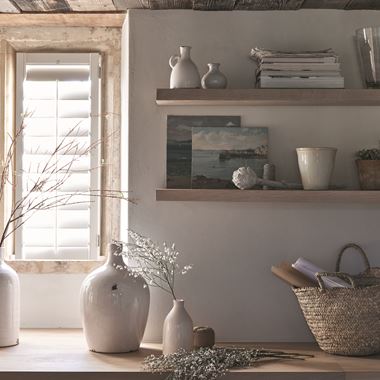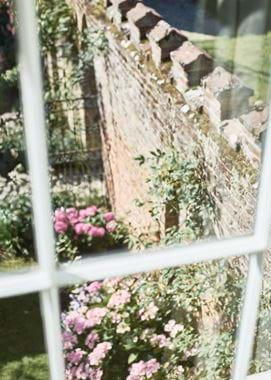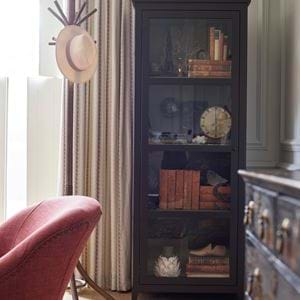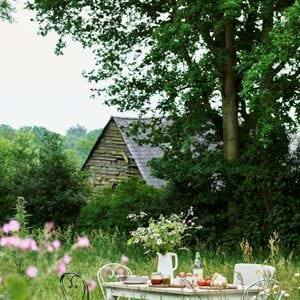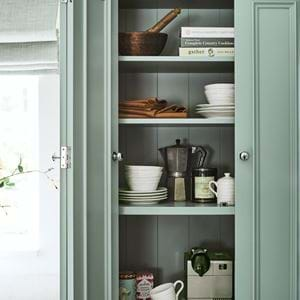Window wildlife
Window wildlife
Wherever you live, so long as you have a window, you can have wildlife, whether it’s a murmuration of starlings glimpsed from a city apartment or a family of hedgehogs that have made a country garden their home. And, as so many of us have discovered (or reaffirmed) this year, taking a moment or two to simply watch their comings and goings can be a moment or two full of joy and calm. So, here are a few ideas and tips to help you do just that more often as we head into winter.
Welcoming wildlife in
There are a few, very simple things that’ll make your garden, balcony or even windowsill a spot that wildlife will want to flock to: food, water and shelter. The latter is, likely, more relevant to a garden, where shrubs and trees will offer both birds and mammals somewhere to feel safely out of sight of the neighbourhood cat as they suss out the food situation. But, even on a balcony, you can create welcome shelter with a few taller or climbing plants. Water can be as simple as a saucer or shallow bowl; the most important thing is that it’s clean and, if it is deep, that there’s an easy way for wildlife to climb out.
Food (especially for birds) is probably the easiest thing for anyone to offer as there are lots of feeder options out there for every situation, from clear ones that sucker to your window and designs that can be attached to walls, through to all-singing, all-dancing tables and hangers for lawns. Either way, try to include a variety of foods as, generally speaking, birds are either insect-eaters (like robins – choose mealworms for these), seed-eaters (sparrows) or a bit of both (tits). Birds need suitable fatty and protein-rich foods year-round, so those with a high proportion of peanuts, suet and high-energy sunflower hearts are best.
If you have a problem with grey squirrels on your bird feeders (or if you’re lucky enough to have red squirrels that you want to feed), try both squirrel-proof feeders (for the birds) and a dedicated specialised peanut feeder for the squirrels themselves to attract them away.
And if you have hedgehog visitors? A low bowl of meaty dog or cat food on the ground will do in a pinch (hedgehogs will eat most anything, and bruised fruit from the kitchen is fine too), but a well-balanced hedgehog food is best. Just steer clear of dairy as hedgehogs are lactose-intolerant. Autumn’s an especially important time to feed them, while they build up their fat stores ready for hibernation, but do put food out if you see any about over winter, as they can sometimes wake up early or be late to hibernate in a mild year.
Making time
The real joy of being able to spot wildlife from your window is that you don’t need to set aside time. A robin feasting on a fallen apple can bring a moment of brightness in between sending emails. A hedgehog rooting around in the grass is a lovely end to the day as you lock up for the night. But you can also consciously make wildlife-watching a part of your day. Like meditation and mindfulness, taking even a little time to do nothing other than observe the goings-on of nature outside is a way to ground yourself in the here and now, and if you have problems concentrating on the others, it can be a good alternative as there’s something tangible to focus your attention on. And, in any case, successful wildlife-watching really does ask for a little stillness. To help you stick to it, make it part of your routine. Perhaps it’s something you do while eating your breakfast, during a tea-break from work or while the bath’s filling. Even ten minutes will do.
You don’t need to get wrapped up in identifying, but if putting a name to what you’re observing adds more meaning, keep a small field guide on your windowsill ready. There are apps you can get for your phone too, but we think this is also a nice opportunity to go off-grid for a bit. You don’t need much more in the way of equipment than your own eyes and ears either, and especially not if you place your feeders and water bowl close to the window. Those that want to see further though, might want to invest in a pair of binoculars. If you do, a 7x or 8x magnification is plenty for gardens. These produce a brighter image, have a greater depth and width of field, and are easier to hold than the higher magnification models, which are really only for if you’re watching wildlife from a distance out in the countryside.


